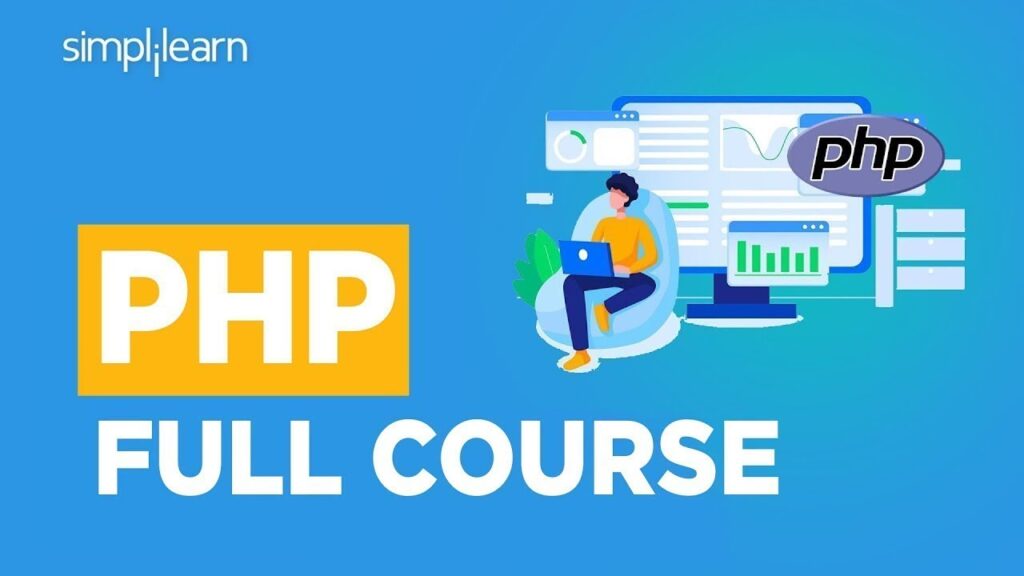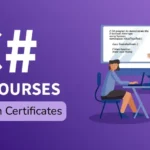My Journey from Zero to Web Developer: How a PHP Course Changed Everything
I remember feeling completely overwhelmed. The internet, with its vast, intricate web of websites and applications, felt like a magical, impenetrable fortress. I wanted to build things, to create my own corner of that digital world, but every time I looked at code, my brain just… froze. HTML and CSS were one thing – they made things look pretty. But how did websites work? How did they store information, handle user logins, or fetch data from a database? That, my friends, was a mystery, a digital wild west I felt utterly unprepared to explore.
Then, one day, a friend, a seasoned developer, casually mentioned, "You should really look into a PHP course. It’s a fantastic place to start for backend development." PHP? I’d heard the name, mostly in whispers, often associated with WordPress (which I knew powered a huge chunk of the internet). Intrigued, and frankly, a little desperate for a roadmap, I decided to take the plunge. This is my story, a testament to how a well-chosen PHP course can transform a complete beginner into someone who finally feels like they belong in the world of web development.
The Search for a Starting Point – Why PHP?
Before I even enrolled, I did my homework. I’d dabbled a bit with front-end stuff, but the "brains" of a website still eluded me. I learned that PHP is a server-side scripting language. What does that even mean? Essentially, it’s the language that runs on the web server, processing requests, talking to databases, and sending back the information that your browser then displays. Think of it as the engine room of a ship, working tirelessly behind the scenes.
What made PHP appealing, especially for a beginner like me?
- Widespread Use: It powers giants like WordPress, Facebook, and countless other sites. This meant a huge community, tons of resources, and plenty of job opportunities.
- Relatively Easy to Learn: Compared to some other languages, PHP has a reputation for being beginner-friendly. Its syntax felt a bit more natural to me than what I’d glimpsed of other languages.
- Quick to See Results: You can set up a simple PHP script and see it run almost instantly, which is incredibly motivating when you’re just starting out.
So, the decision was made. I was going to find the best PHP course I could, one tailored for absolute beginners, and embark on this coding adventure.
Stepping into the Unknown: My First PHP Course
Nervous, excited, and armed with a freshly brewed cup of coffee, I opened the first module of my chosen PHP course. The initial setup itself felt like a small victory. Installing XAMPP (or MAMP if you’re on a Mac) to create a local server environment was my first real "techie" task. It felt like I was setting up my own personal web development lab, right on my laptop.
The first few lessons were all about the absolute basics. "Hello World!" – the classic programmer’s first phrase. Seeing those words appear in my browser, rendered by my own PHP script, gave me a genuine thrill. It was a tiny step, but it proved I could make things happen.
The Building Blocks: Variables, Loops, and Functions (Oh My!)
My PHP course carefully guided me through the fundamental concepts. It wasn’t just about memorizing syntax; it was about understanding the logic.
- Variables: These felt like little storage boxes. I learned how to name them, put different types of data inside them (numbers, text, true/false values), and then pull that data out when I needed it.
$was the magic symbol that told PHP, "Hey, this is a variable!" - Conditional Statements (
if,else if,else): This was where the "decision-making" power came in. "If this condition is true, do this; otherwise, do that." It felt like teaching my computer to think, albeit in a very structured way. Building a simple login form where PHP checked if the username and password matched was a monumental achievement for me. - Loops (
for,while,foreach): Repeating tasks efficiently. Instead of writing the same line of code ten times, I learned to tell PHP, "Do this thing ten times," or "Do this for every item in this list." This was a huge time-saver and made my code much cleaner. - Functions: These were like creating my own mini-programs. If I had a piece of code I knew I’d use often, I could wrap it in a function, give it a name, and then just call that name whenever I needed it. This concept of reusability was incredibly powerful.
The course explained these concepts with clear examples, often relating them to real-world scenarios. It wasn’t just theory; it was always about how I could use this to build something practical. The instructors were patient, and the online community forums were a lifeline for those moments when my code just wouldn’t cooperate. Debugging became a new kind of detective work, and the satisfaction of finding that tiny missing semicolon was immense.
The Real Power Unlocked: PHP and Databases
This was the game-changer for me. My PHP course then moved into perhaps the most crucial aspect of dynamic web development: interacting with databases. Specifically, we dove into MySQL (or MariaDB, which is very similar).
Suddenly, my websites weren’t just static pages or simple forms that forgot everything once you refreshed them. Now, they could remember. They could store user data, blog posts, product information – anything!
Learning how to:
- Connect PHP to a MySQL database: This felt like building a bridge between two different worlds.
- Write SQL queries: These were the commands I used to "talk" to the database –
SELECTto get data,INSERTto add new data,UPDATEto change existing data, andDELETEto remove it. - Display dynamic content: Fetching a list of blog posts from the database and displaying them on a webpage, complete with titles and content, was my first true "aha!" moment. This is how real websites work!
My heart pounded a little when I successfully built a simple guestbook application. Users could submit their names and messages, and then those entries would appear instantly on the page, pulled directly from my database. It was no longer just an idea; it was tangible proof of what I could achieve with a PHP course.
Building My First Dynamic Project
The pinnacle of the basic modules in my PHP course was usually a small project. For me, it was a rudimentary content management system (CMS), similar to a very stripped-down blog. I created an admin panel where I could add, edit, and delete posts, and then a front-end where visitors could see those posts.
This project tied everything together:
- HTML for the structure and forms.
- CSS for styling.
- PHP for handling form submissions, connecting to the database, retrieving and displaying data, and managing sessions (for logging in and out).
- MySQL for storing all the post content and user credentials.
It was challenging, frustrating at times, but the feeling of completing it, of having built a fully functional, dynamic web application from scratch, was incredibly empowering. I finally understood the full cycle of web development.
Beyond the Basics: Frameworks and the Future (Laravel!)
As I neared the end of the core PHP course, the instructors introduced the concept of PHP frameworks. They explained that while building everything from scratch was great for learning, in the real world, developers use frameworks to speed up development, enforce good practices, and create more scalable and maintainable applications.
The framework that captured my attention, and which my course briefly introduced, was Laravel. It’s often hailed as one of the most elegant and developer-friendly PHP frameworks. Learning about:
- MVC (Model-View-Controller) architecture: A structured way to organize your code, separating concerns.
- Artisan commands: Laravel’s command-line interface that makes common tasks a breeze.
- Eloquent ORM: A beautiful way to interact with databases using PHP objects instead of raw SQL.
This glimpse into Laravel showed me the vast potential beyond basic PHP. It wasn’t just about writing code; it was about writing better, more organized, and more efficient code. My PHP course had given me the foundational knowledge, and now I knew there were clear paths to becoming even more proficient.
What I Learned Beyond the Code (The Soft Skills)
Looking back, my PHP course taught me so much more than just lines of code.
- Problem-Solving: Every bug, every error message, was a puzzle to solve. It honed my analytical skills and taught me to break down complex problems into smaller, manageable pieces.
- Patience and Perseverance: There were times I wanted to throw my laptop across the room. But pushing through those moments, Googling relentlessly, and finally finding the solution built resilience.
- Attention to Detail: A single missing semicolon or a misspelled variable name could break everything. This course drilled into me the importance of meticulousness.
- The Value of Community: Whether it was the course’s own forum or larger communities like Stack Overflow, I learned that I wasn’t alone. There’s always someone who’s faced a similar problem and is willing to help.
Is a PHP Course Right for You? My Advice.
If you’re where I was – curious about web development, perhaps a bit intimidated by the backend, and looking for a clear starting point – then yes, absolutely, a PHP course for beginners could be exactly what you need.
Here’s what I’d recommend based on my experience:
- Look for a comprehensive course: Make sure it covers the basics of PHP syntax, interaction with databases (like MySQL), and ideally, an introduction to object-oriented programming (OOP) and perhaps a popular framework like Laravel.
- Hands-on projects are crucial: Learning by doing is the most effective way. A good course will have practical exercises and projects that force you to apply what you’ve learned.
- Check for support: An active community forum, Q&A sections, or even direct instructor support can make a huge difference when you get stuck.
- Consistency is key: Don’t try to cram everything in one go. Dedicate a consistent amount of time each day or week to practice and review.
- Don’t be afraid to make mistakes: Errors are part of the learning process. Embrace them as opportunities to learn and grow.
My PHP Journey Continues…
Today, I’m not just someone who "dabbled" in web development. Thanks to that initial PHP course, I’ve built several dynamic websites, contributed to open-source projects, and even taken on freelance work. The fortress no longer feels impenetrable; I’ve learned how to navigate its corridors, and I’m constantly discovering new rooms and passages.
If you’ve been on the fence, wondering if coding is for you, or if you can really grasp backend development, I urge you to give a PHP course a shot. It changed my trajectory, opened up a world of possibilities, and gave me the skills and confidence to build the digital things I once only dreamed of. Your own incredible journey might just be a few clicks away.



